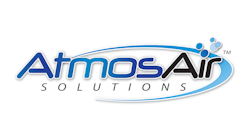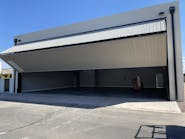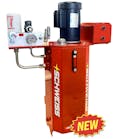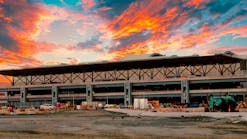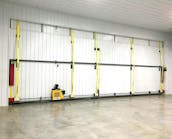Coronavirus Puts a New Focus on the Spread of Illness in Airports
The convenience and ease of air travel is more popular than ever. We take flying from the US to China, for example, for granted. People travel to and from Chinese cities daily without a second thought.
That was until the recent Coronavirus outbreak. The Coronavirus epidemic has not only focused new attention to international travel, but the dangers that result when traveling through airports around the world.
Coronavirus can be spread from person to person and also from surface to person, as an infected person touches surfaces like airport handrails, toilets, newsstands, etc. Innocent travelers at airport can contract the virus by simply touching a surface anywhere in a terminal.
The spread of bacteria and virus from person to person and from surface to person demands active air disinfection to sanitize air and surfaces. Coronavirus when deposited on a non porous surface, like a handrail, doorknob or elevator button can be viable for up to seven days. Unless specifically surface cleaned very regularly, this allows for spread of illness from these surfaces to people. Airports can be particularly susceptible to this.
This means the airport which often times resembles a city within a city, is an active, bustling place. Airports all over the world are seeing record numbers of people passing through every day. Also given the enhanced security measures people arrive much earlier and spend more time at the airport. International travel for business or pleasure has also increased with crowds of people from many cultures who can be exposed with many different types of viruses and germs in the same space.
To this end many airports have given a lot of attention to the customer experience. Airports now offer many shopping choices, restaurants and various food choices, leisure activities like massages and entertainment areas, and many airlines have airline clubs within each airport that can be a popular destination for business travelers and meetings, etc.
This is all aimed at maximizing the customer experience, but there is one aspect in any space that can sometimes be overlooked but is ever present, that is the indoor air we breathe.
Indoor air can be 2-to-5 times worse than outdoor air. This can be more problematic in an airport.
Airplanes burn jet fuel, most commonly Jet A and Jet A-1 which are kerosene based and are mixtures of many hydrocarbons. As the fuel burns, it will emit both particulate and chemical compounds called VOC’s (Volatile Organic Compounds) into the air. Since the jets are parked and engines run so close to the airport, these air pollutants will get into the air being delivered into the airport by the HVAC systems. These pollutants can irritate our senses, cause unpleasant odors and often result in illness to passengers and airport
People degrade indoor air quality as well. Our skin makes dust and particles, we emit ammonia and other bio-effluents, and we also can carry and spread bacteria, viruses and germs. Also tired travelers can have weakened immune systems, making them more susceptible to illness from unclean and unhealthy air. Surely someone who gets sick or irritated from a visit to the airport won’t report a positive customer experience. Poor indoor air will relentlessly attack the senses, and spoil all of the efforts given to the many other amenities at the airport.
For these many reasons, addressing and improving indoor air quality is a key factor in an airport. Most airports will use enhanced filtration, to catch and grab contaminants that can be delivered by the air system. Airports will typically enhance ventilation and turn the air over with new air more times than in a typical home or office. Some airports have incorporated Ultra Violet systems to help to sterilize parts of the HVAC system to improve the air quality delivered by them.
Very progressive airports like Los Angeles World Airport (LAX) use multiple strategies and incorporate active air cleaning using bi-polar air ionization. B-polar systems installed into the HVAC system, allow air ions to be delivered into the airport terminals and concourses. These ions reduce particles, break down VOC’s and odors and sanitize the indoor air to reduce bacteria, viruses and germs. LAX has hundreds of these systems installed throughout their HVAC systems and more going in on a regular basis as they add or renovate spaces and HVAC systems. They have measured an increase in air ions in the terminals to levels found in a pristine area like a mountain range. Air quality and odor complaints are non-existent. Other airports like Chicago’s O’Hare, Fort Lauderdale International and Tokyo’s Narita Airport have also adopted the bi-polar ion technology.
As more passengers pass through airports every day, the customer experience is more important than ever. Addressing the indoor air is a critical component and should be adopted by all airports to ensure a positive experience and keep travelers healthier.
Tony Abate is vice president and chief technical officer of AtmosAir Solutions, which provides clean indoor air technology to airports in Charlotte, Chicago/O'Hare, New York’s LaGuardia, Minneapolis,, San Francisco, Fort Lauderdale, Anchorage, Vancouver and Narita in Tokyo.

